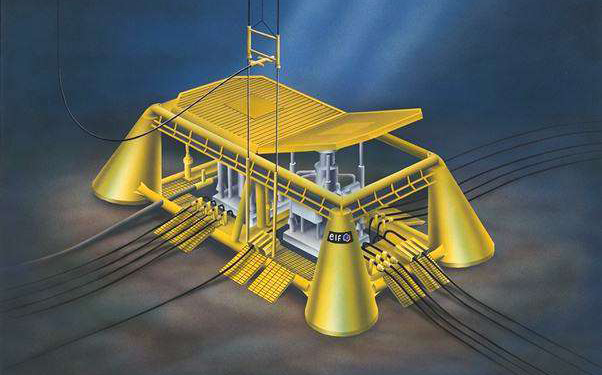Lille-Frigg – under water

The first of these, 25/2-C-1 H, encountered the reservoir 71 metres below the expected depth because it lay in a fault zone. A new track was thereby drilled further west, which penetrated the reservoir at a depth of 3 614 metres beneath the drill floor. The next two wells found it at 3 604 metres.
Lille-Frigg was developed as a subsea satellite with three templates, each with a single well. One of the templates also housed the manifold and the export flowline.
Production from the field began on 13 May 1994. It was monitored and operated from the control room on Frigg QP, but could also be run from a control room on TCP2. The processing equipment on the latter platform was upgraded to handle production from Lille-Frigg. Its gas was dewatered before being exported to Scotland, while the condensate (light oil) was treated and then piped to the Sture terminal near Bergen through Frostpipe and the Oseberg Transport System.
The condensate went to Norway because it emerged during planning of the Frøy development that constructing a dedicated pipeline for this field’s oil and condensate would allow Lille-Frigg condensate to travel through the same system. That would increase the profitability of a new pipeline.
Lille-Frigg was tied back to TCP2 by a 10-inch pipeline, into which chemicals were injected between field and platform. Diethylene glycol (DEG) was used to inhibit the formation of hydrate (hydrocarbon ice), and methyldiethanolamine (MDEA) to prevent corrosion through pH stabilisation.
These liquids were piped from TCP2. Lines from the platform also carried hydraulic fluid for opening and closing valves, while power and control signals were transmitted by cable.
Shutdown of North-East FriggOdin ceases production